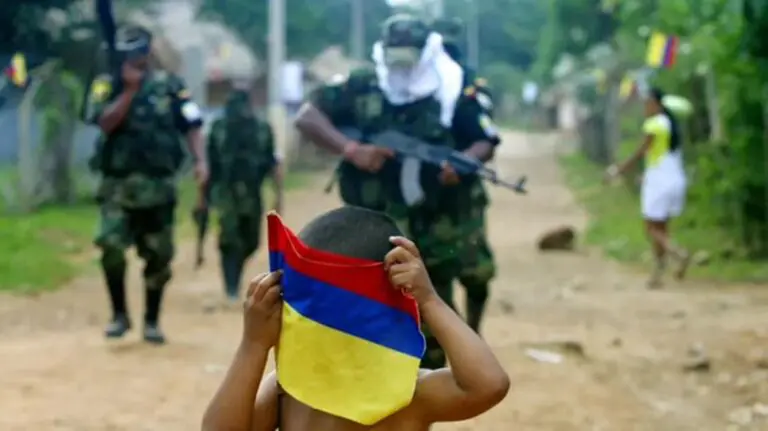Eight Internal Armed Conflicts Hit Colombia: ICRC

A child holds a Colombian flag. X/ @EFGDigital
April 2, 2025 Hour: 10:09 am
In 2024, the humanitarian situation in Colombia deteriorated alarmingly, the Red Cross pointed out.
At the end of March, the International Committee of the Red Cross (ICRC) published “Humanitarian Challenges 2025”, a report showing that 2024 was one of the most violent years in Colombia since the signing of the peace agreement with the Revolutionary Armed Forces of Colombia (FARC) in 2016.
RELATED:
Gustavo Petro Denounces Media Censorship and Defends Right to Information in Colombia
“In 2024, the humanitarian situation in Colombia deteriorated alarmingly. The intensification of territorial disputes between armed groups, their reconfiguration and fragmentation, the increase in armed actions, the tightening of control mechanisms over the civilian population in areas under the dominance of armed actors, as well as the resumption of hostilities between the Public Force and some of these groups following the end of ceasefires, significantly increased the exposure of the civilian population to severe protection risks and violations of international humanitarian law (IHL),” the ICRC report stated.
“Among the most concerning risks are the recruitment, use, and exploitation of children and adolescents; sexual violence; the presence, use, and abandonment of explosive devices; the lack of respect for the principles governing the conduct of hostilities; and the mistreatment of civilians, among others,” it added.
The ICRC documented 382 allegations of violent actions with international humanitarian implications. Of these, 44 percent involved acts directed against persons protected under international humanitarian law, while 33 percent were related to the failure to implement measures to protect the civilian population during hostilities. This scenario reflects a lack of precaution by the parties in conflict.
The ICRC report also highlights an 89 percent increase in the confined population compared to 2023, affecting more than 88,000 people, primarily Indigenous communities. Additionally, displacement events have risen by 34 percent, leaving more than 159,000 people displaced. The department of Choco has been particularly affected, with more than 36,288 people impacted by forced confinements.
In many disputed areas, the civilian population is stigmatized by irregular armed groups, being accused of belonging to one side or another. These circumstances have turned these territories into “scorched-earth zones,” where civilians fall victim to direct violence and devastation.
Currently, Colombia has eight internal armed conflicts involving FARC dissidents, the National Liberation Army (ELN), far-right groups, and criminal gangs. The clashes have resulted in 719 victims, mostly civilians, who have been injured or killed by firearms, ammunition, and explosives, casting doubt on the progress of President Gustavo Petro’s “Total Peace” policy.
The ICRC issued an urgent call for the parties in conflict to comply with the rules of international humanitarian law, emphasizing the protection of those who do not participate or have ceased to participate in hostilities.
teleSUR/ JF
Source: ICRC






